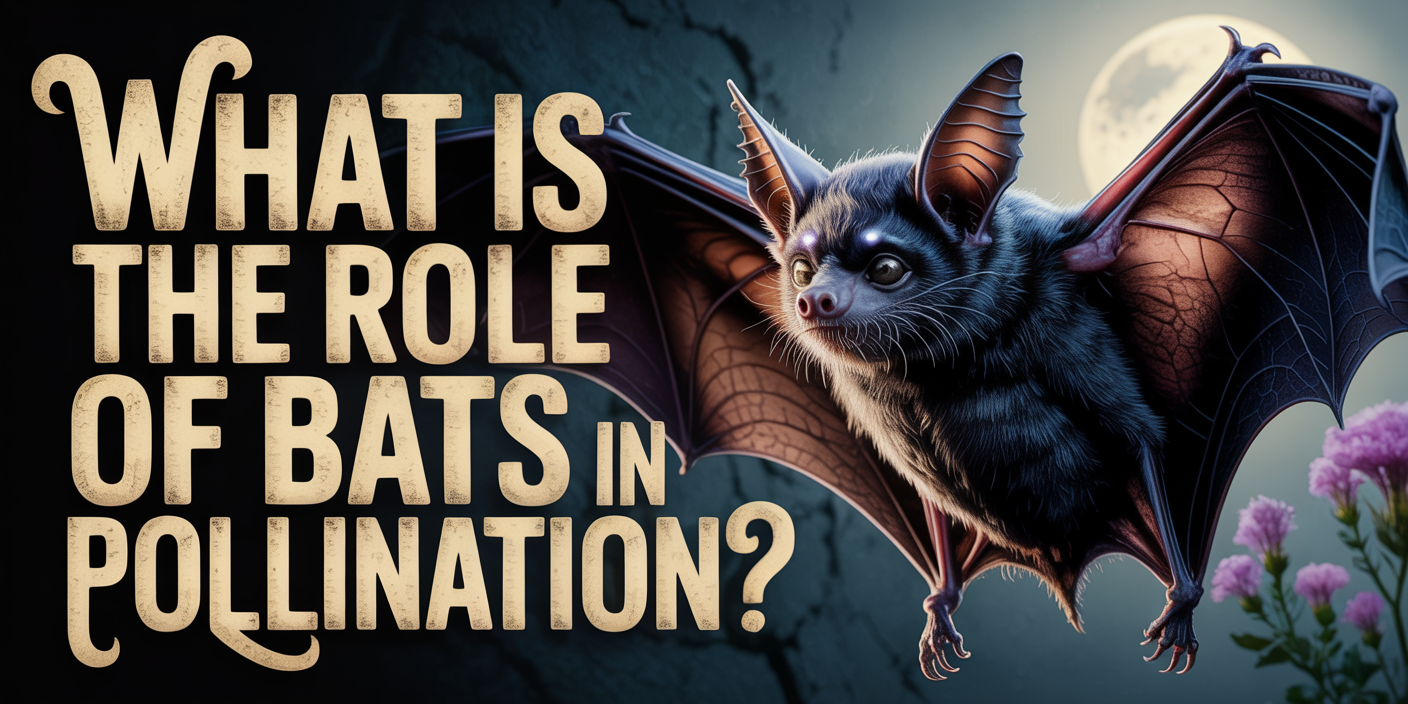Bats help pollinate plants by carrying pollen as they feed on nectar at night. This fertilizes plants, helping them produce fruit, seeds, and sustain their life cycle, especially in tropical and desert ecosystems.
Bats might be known for their night flights and eerie silhouettes, but they’re also hardworking pollinators essential to many ecosystems. While bees and butterflies handle daytime duties, certain bats step in after dark to help plants reproduce and thrive.
In this guide, we’ll dive into how bats pollinate flowers, which plants rely on them, and why their nighttime work matters more than most people realize.
Do Bats Really Help With Pollination?
Yes, bats are legitimate pollinators, especially in tropical and desert regions where many plants bloom at night. This process, called chiropterophily, refers specifically to pollination by bats and involves flowers that open after sunset and produce strong scents or large amounts of nectar.
While bees dominate daytime pollination, some plants are built for bat visitors with wide, bell-shaped flowers that can handle their weight and long tongues. These bats fly from flower to flower, picking up pollen on their fur and spreading it as they feed, helping the plants reproduce successfully.
How Do Bats Pollinate Flowers?
Nectar-feeding bats, especially fruit bats and long-nosed bats, use their long snouts and tongues to reach deep into flowers for sweet nectar. As they feed, pollen sticks to their fur, especially around their heads and necks, allowing them to carry it to the next flower they visit.
Unlike bees that deliberately gather pollen, bats act more like accidental couriers, brushing against flower parts during feeding. This unintentional transfer is still highly effective and often essential for plants that bloom at night when insect pollinators are inactive.
What Types of Plants Do Bats Pollinate?
Bats are responsible for pollinating over 500 plant species, including economically important crops like bananas, mangoes, guavas, and agave, the plant used to make tequila. These plants typically produce large, pale flowers that open at night and emit strong scents to attract bats.
Many of these plants have evolved specifically for bat pollination, offering nectar deep inside sturdy blossoms that can withstand repeated visits. Without bats, these crops would struggle to reproduce naturally, affecting not only wild ecosystems but also global food and beverage industries.
Where Is Bat Pollination Most Common?
Bat pollination is most prevalent in tropical and desert regions where night-blooming plants are abundant. Countries in Central and South America, parts of Africa, and Southeast Asia rely heavily on nectar-feeding bat species to maintain healthy native flora.
In the U.S., bat pollination is especially important in the Southwest, where agave and cacti depend on species like the Mexican long-tongued bat and the lesser long-nosed bat. These bats travel long distances during migration, supporting plant diversity and stability across vast habitats.
Why Is Bat Pollination Important to Humans?
Bat pollination directly supports the growth of crops and plants that many communities rely on for food, medicine, and raw materials. Fruits like bananas and guavas, and plants like agave, depend on bats to continue producing year after year, making them a hidden force in agricultural success.
Beyond farming, bats help maintain biodiversity by supporting native plant populations that provide shelter and food for other wildlife. Their role in pollination and seed dispersal helps keep ecosystems balanced, resilient, and productive, especially in regions where daytime pollinators are less active.
What Threatens Bat Pollination and How Can We Help?
Habitat destruction, urban development, pesticide use, and climate change are major threats to bat populations and the plants they pollinate. As roosting sites disappear and food sources shrink, many nectar-feeding bats face declining numbers, which puts pollination at risk for hundreds of plant species.
Supporting bat conservation means protecting natural habitats, planting native flowering species, and avoiding the use of harmful chemicals. By raising awareness and creating bat-friendly environments, we help preserve their pollination services and the ecosystems, and agricultural benefits, that depend on them.
How AAAC Wildlife Removal Supports Healthy Bat Coexistence
At AAAC Wildlife Removal, we recognize that bats play an essential role in ecosystems, even while helping homeowners reclaim their spaces. Our removal process is designed to safely exclude bats from buildings without harming them or disrupting their natural behaviors.
We also educate property owners on how to prevent future intrusions while encouraging responsible coexistence. By sealing entry points, providing cleanup, and offering humane solutions, we help protect both your home and the important environmental contributions bats make every night.
Why Bat Pollination Matters?
Bats may not look the part, but they’re critical players in pollination, helping sustain ecosystems and support the plants we rely on every day. From tropical fruit trees to agave fields, their nighttime visits keep vital species thriving.
Understanding the role of bats in pollination helps us see them as more than just occasional houseguests. By protecting their natural habitats and calling professionals like AAAC Wildlife Removal when they show up uninvited, we can live alongside them, and let them keep doing their part for the planet.
Want to Keep Bats Out Without Harming Them?
Bats are essential to the environment, but that doesn’t mean you want them nesting in your attic. If you’ve spotted signs of bat activity around your home, let AAAC Wildlife Removal step in.
Our experts safely and humanely remove bats, seal up entry points, and help you prevent future visits, all while respecting the important role bats play in nature. Call AAAC Wildlife Removal today and protect your home the responsible way.




